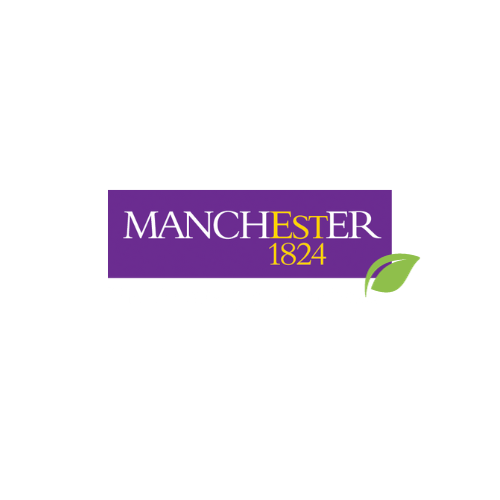Title Page
-
Document No.
-
Inspection reason
-
Inspector
- DSO
- Lab user - PI
- Lab user - Researcher
- Technical inspection
- Head of Department
- Faculty inspector
- College Inspector
- External Inspector
-
Laboratory / area (e.g. B630, RSM 4.21)
-
Lead user / Contact
-
Conducted on
-
Prepared by
Lab safety Inspection - Outstanding actions
-
Has the previous inspection in the area been reviewed
-
Are there any outstanding actions
-
Please detail outstanding action points. These actions must be completed, with any raised during this inspection, before sign off is possible.
-
The previous inspection and all actions must be reviewed before sign off of this inspection is possible.
-
Are there any outstanding SALUS reports or actions for the area?
-
Is there a suitable plan in place to close out the actions?
-
undefined
Lab safety Inspection - Facilities & housekeeping
-
L.A Facilities & Housekeeping
-
L.A.1 Access to laboratory is secure and restricted to appropriate personnel
-
L.A.2 Appropriate PPE is available and in use ( PPE includes safety glasses, laboratory coat and suitable gloves)
-
L.A.3 A variety of appropriate protective gloves are available
-
L.A.4 Standard operating procedures are displayed next to equipment
-
L.A.5 Warning signs for laser, radiation, biological or other hazards are prominently posted
-
L.A.6 Food and drink are not stored or consumed in laboratories
-
L.A.7 There is a landline telephone available within the lab
-
L.A.8 Is the laboratory Hazard assessment present and up to date?
-
Please ensure this is completed and/or updates as soon as possible
-
Visit lab hazard assessment database
https://imperiallondon.sharepoint.com/sites/foe/Bioengineering/LIMS/Lists/Laboratory%20hazard%20assessment/AllItems.aspx -
Is the lab induction form up to date and logged in the database?
-
Visit induction database
https://imperiallondon.sharepoint.com/sites/foe/Bioengineering/LIMS/Laboratory%20induction%20forms/Forms/AllItems.aspx -
is the Safety folder up to date?
-
L.B. Housekeeping
-
L.B.1 Aisles/exits are clear
-
L.B.2 Spill kits, supplies and decontamination material are available for the hazards present
-
L.B.3 Spill procedures are clearly displayed
-
Lab bench housekeeping
Element
-
Bench number/ designation
-
L.B.4 Benches only occupied by chemicals/equipment in use
-
L.B.5 Storage of items on floors is kept to a minimum
-
L.B.6 Storage of heavy items above shoulder height is avoided
-
L.B.7 (Official) Signs are attached to unattended experiments with appropriate details
-
Media/picture
-
L.C General Waste Management (black and orange bags, general laboratory liquids and items)
-
L.C.1 All waste is disposed of appropriately
-
L.C.2 Hazardous wastes and materials are contained and do not drain to sewer
-
L.C.3 Hazardous waste is clearly labelled with waste description, biohazard symbols if required and date produced. The waste label includes the waste generator contact details (name, department/school/unit and contact number) and if the waste has had any on-site treatment or testing. A storage stable risk assessment has been completed
-
L.C.4 Wastes are segregated according to hazard, treatment requirements and to optimise recycling opportunities
-
L.C.5 Wastes are stored in fit for purpose containers (e.g. wheelie bin) that are able to withstand storage conditions and transport
-
L.C.6 Wastes are stored at appropriate temperatures
-
L.C.7 There are sufficient and appropriate waste disposal containers
-
L.C.8 Wastes are disposed of regularly and volumes are kept to a minimum
-
L.D. Electrical equipment
-
L.D.1 Laboratory equipment, including cords and leads, are in good working order
-
L.D.2 There are sufficient general-purpose outlets (GPOs) for the equipment
-
L.D.3 Double adaptors; piggy-back plugs are not in use
-
L.D.4 Extension leads are only used for low power connections
-
L.D.5 Extension leads with overload protection are used if sufficient GPOs are not available
-
L.D.6 Equipment is appropriately CE marked
-
L.D.7 Fittings are protected against external damage
-
L.D.8 Equipment that may be left on unattended has a manual cut-off switch
-
L.D.9 Electrical equipment is tested at appropriate intervals (PAT tested)
-
L.D.10 Any modified/designed (in-house) electrical equipment has been risk assessed and certified as safe by the departmental electrical safety officer (e.g. has an approved notice)
-
L.D.11 Out of Service tags for faulty electrical equipment are available and used
-
L.D. 12 Uninterruptable Power Supply (if present) has been inspected, tested and monitored. Have the batteries (battery pack) been inspected (or replaced) in the last 2 years? Any UPS in storage must have the battery pack disconnected. (Hazard Alert 2012)
-
L.E. Refrigerators/freezers/cool rooms
-
L.E.1 Refrigerators, freezers, cool rooms are appropriately labelled (e.g. spark free/intrinsically safe)
-
L.E.2 Fridges, freezers etc. are regularly defrosted (particularly -80c)
-
L.E.3 Flammable liquids are only stored in fridges/freezers that are intrinsically safe (spark free)
-
L.F. Environmental issues
-
L.F.1 Is the temperature appropriate within the area
-
L.F.2 Is the lighting appropriate and all functioning correctly
-
L.F.1 Chemical waste bottles are clearly labelled and assessed for storage stability
-
L.F.2 Chemical containers are cleaned prior to recycling or disposal:<br>- Triple rinsed and labels and lids removed before placing in the bottle and can recycling bins<br>- Containers with oily or persistent residues are washed with detergent and labels removed before placing in the bottle and can recycling bins
-
L.F.3 Contaminated glassware that is not cleaned as above is treated as a prescribed industrial waste
-
L.F.4 There is no evidence of incorrect disposal down sinks, ie discoloration, staining, odorous sinks, etc
-
L.F.5 Hoses in sinks are short to prevent backflow contamination of the water supply
-
L.F.6 There are no odours, dust or smoke in the area
-
L.F.7 All service areas, where chemicals are used and dispensed or where wastes are stored are suitably bunded/protected from leakage into storm water or sewer drains.
Lab Safety Inspection - Specialist equipment
-
L.F. Fume cupboards
-
L.F.1 Fume cupboards are appropriate for the type of hazard (ie radiation, biological, etc)
-
L.F.2 The fume cupboard is used with the sash at or below the recommended height
-
L.F.3 The leading edge of the fume cupboard is clear of equipment and other items (also see the Guidelines on the use of Fume cupboards )
-
L.F.4 The floor space in front of the hood, the main work area, is clear
-
L.F.5 The fume cupboard is free of clutter and large equipment
-
L.F.6 The doors and windows within 1 m of the cupboard are closed when the cupboard is used
-
L.F.7 Emergency switches are clearly identified for power and gas supply
-
L.F.8 The fume cupboard has been inspected and certified within the last 6-12 months
-
Media
-
L.G. Biosafety Cabinets
-
L.G.1 The biosafety cabinet is clean and free of clutter (i.e. routine cleaning performed recently)
-
L.G.2 The biosafety cabinet has been inspected and certified within the last 12 months
-
Media
-
L.H. Centrifuges
-
L.H.1 The centrifuge and rotor is regularly inspected for safety
-
L.H.2 The centrifuge and rota show no sign of spillage or wear
-
L.I. Autoclaves
-
L.I.1 The autoclave is regularly inspected and calibrated
-
L.I.2 Autoclave records are retained and show that sterilisation was achieved
-
L.J. Safety Equipment
-
L.J.1 Eye wash facilities are tested routinely
-
L.J.2 The eyewash station provides aerated water at an appropriate pressure
-
L.J.3 The eyewash station is not blocked and is readily accessible
-
L.K. Chemicals (general)
Chemical management
-
L.K.1 Chemicals are registered on the departmental COSHH database
-
COSHH database
https://share.imperial.ac.uk/foe/Bioengineering/LabInformation/TempCoshh/Forms/AllItems.aspx -
L.K.2 MSDS are available for chemicals
-
L.K.3 Documented COSHH/risk assessments are available for chemical use
-
L.K.4 Carriers are provided for large containers (>2L)
-
L.K.5 Unattended reactions are clearly signed
-
L.K.6 Hydrofluoric acid use is careful managed in accordance with safety Guidelines
Labelling of chemicals
-
L.K.7 All chemicals are labelled clearly and unambiguously in accordance with the COSHH regulations 2002
-
L.K.8 All reused containers have label removed or completely covered
-
L.K.9 Decanted chemicals are appropriately labelled
Chemical storage
-
L.K.10 All poisons and drugs are stored in a locked cabinet/safe
-
L.K.11 Carcinogens are securely stored
-
L.K.12 Chemicals not in use are placed in the correct storage location
-
L.K.13 Chemical stocks are kept to a minimum. A standard laboratory is generally allowed 6-8 Winchesters each of solvents and acids
-
L.K.14 Incompatible classes of chemicals are segregated (generally by dangerous goods class)
-
L.K.15 Chemical containers are of the correct type and in good condition
-
L.K.16 No food containers are in use for the storage of chemicals
-
L.K.17 Unsealed containers of flammable waste are stored in fume cupboards or ventilated cupboards
-
L.K.18 Incompatible chemicals stored in the same cupboard have separate spill containment (e.g. acids and bases)
Storage on open shelving
-
L.K.19 All containers are <5 kg/L in size
-
L.K.20 On shelves >1.5 m high all glass containers are <1kg/L
-
L.K.21 The shelving is chemically resistant to the chemicals stored
-
L.K.22 Plastic chemical containers are in good condition and not older than 5 years (or recommended by the manufacturer as a suitable life of the plastic. see date stamp on container)
-
L.K.23 Bottles with liquid dispensers fitted are restrained from falling and accidental discharge
Storage in fire-proof cabinets
-
L.K.24 All containers in cabinets are <25L in size
-
L.K.25 The self-closing mechanisms of the doors are operating correctly
Storage in ventilated cupboards
-
L.K.26 All containers in cupboards are <2kg/L in size
-
L.K.27 Incompatible chemicals stored in the same cupboard have separate spill containment
-
L.K.28 Ventilation is sufficient to prevent build-up of offensive odours
Evidence of chemical spills or incorrect disposal
-
L.L. Compressed and fuel gases
-
L.L.1 All the cylinders inside rooms are connected for use (ie no laboratory storage) flammable or toxic gas cylinders may only be used in the fume cupboard
-
L.L.2 Gas cylinders are each securely chained with individual chains secured around the body of the cylinder and the chain ends attached to 2 separate securing points
-
L.L.3 Cylinders, pipes & valves are protected from mechanical damage
-
L.L.4 Strength of hoses & clamps attached to gas cylinder regulators are sufficient for maximum regulator delivery pressure
-
L.L.5 Obsolete gas regulators are not in use
-
L.L.6 The gas cylinder and major joints are regularly tested for leaks
-
L.L.7 Flashback arresters are used in fuel gas supply lines
-
L.L.8 Non-return (check) valves are fitted to all processes that exceed cylinder pressure
-
L.L.9 Unusual gas systems have been inspected and approved by BOC
-
L.L.10 There is a cylinder trolley available for carrying cylinders
-
L.M. Cryogenic liquids
-
L.M.1 Cryogenic liquids are located in well-ventilated areas
-
L.M.2 Containers used for cryogenic liquids are designed specifically for that purpose
-
L.M.3 Appropriate protective gloves and face shield are available
-
L.M.4 Low oxygen alarm is present, calibrated and working
-
L.N. Biological hazards
-
L.N.1 Documented risk assessments (Bio1) for use of biological hazards are available
-
L.N.2 Hand washing facilities are available.
-
L.N.3 Biological materials are clearly labelled, dated and appropriately stored
-
L.N.4 Appropriate disinfectants are available
-
L.N.5 Appropriate waste handling procedures are in place (autoclaving, disinfecting etc.)
-
L.N.6 Biohazardous waste and sharps bins are provided, where necessary
-
L.N.7 The sharps containers are of single shell construction and safety compliant
-
L.N.8 Separate facilities are provided for animal storage, cleaning, examination, etc.
-
L.N.9 No items are stored on the floors
-
L.N.10 Immunisations have been considered by staff and students (Hep B)
-
L.N.11 Health Surveillance has been discussed with staff and students
-
L.N.12 Glass pipettes have been considered for replacement with alternatives (e.g. plastic)
-
L.N.13 Strong sealable containers are available to transport materials around the building or between buildings
Lab safety Inspection - Radiation, lasers
-
L.O. Ionising radiation hazards
-
L.O.1 A radiation safety officer has been appointed to review the radiation work and their details are displayed
-
L.O.2 An appropriate radiation warning sign is displayed at the entrance
-
L.O.3 Documented risk assessments and safe work procedures for use of ionising radiation are available
-
L.O.4 Emergency procedures are available and reviewed annually
-
L.O.5 Personal occupationally exposed to ionizing radiation are issued with a personal dosimetry device (e.g. TLD Badge)
-
L.0.6 Radiation contaminated monitoring or x-ray leakage tests are regularly conducted and recorded
-
L.P. Radioactive unsealed sources
-
L.P.1 Documented risk assessments and safe work procedures for use of ionising radiation are available
-
L.P.2 Work surfaces are impervious (wooden benches and tiled surfaces are unsuitable)
-
L.P.3 Hand washing facilities are available
-
L.P.4 Appropriate shielding material is available
-
L.P.5 Secondary containment is available and utilised (i.e. spill trays)
-
L.P.6 All sources of ionising radiation are labelled and stored in secure locations
-
L. P.7 All storage locations of ionising radiation are labelled
-
L.P.8 Appropriate monitoring equipment is available and has been regularly inspected/tested/calibrated.
-
L.P.9 Decontamination/emergency procedures are clearly displayed
-
L.P.10 Contamination checks are conducted before and after each procedure
-
L.Q. Radioactive sealed sources
-
L.Q.1 Documented risk assessments and safe work procedures for use of ionising radiation are available
-
L.Q.2 Hand washing facilities are available
-
L.Q.3 Appropriate shielding material is available
-
L.Q.4 All sources of ionising radiation are labelled and stored in secure locations
-
L.Q.5 All storage locations of ionising radiation are labelled
-
L.Q.6 Appropriate monitoring equipment is available
-
L.Q.7 Sealed radiation sources are maintained in good order
-
L.T Lasers
-
Laser Classification
-
L.T.1 Laser laboratories housing class 3 and/or class 4 lasers are restricted and access is controlled
-
L.T.2 A laser warning sign is clearly displayed at the entrance. This is a black symbol on a yellow background. The laser class and wavelength are also indicated.
-
L.T.3 A laser safety officer is responsible for the area and their name and contact details are displayed
-
L.T.4 Beam is restricted to the optics bench or equipment by a physical barrier
-
L.T.5 Beam stops are installed
-
L.T.6 Appropriate fail-safe devices to prevent accidental exposure are in place
-
L.T.7 Documented risk assessments and safe work procedures for use of lasers are available
-
L.T.8 Procedures (incl. emergency) are reviewed annually
-
L.T.9 Wavelength-specific eye protection is available for laser operators
-
L.S. Ultraviolet radiation
-
L.S.1 Appropriate shielding and/or interlocks are in place (e.g. interlocks on germicidal lamps, and protective shields on transilluminators )
-
L.S.2 Additional PPE is available (i.e. additional skin and eye protection may be required)
-
X-Ray apparatus or sealed source apparatus
-
L.R.1 Documented risk assessments and safe operating procedures for use of ionising radiation are available
-
L.R.2 Appropriate shielding material is available
-
L.R.3 Appropriate monitoring equipment is available
-
L.R.4 Appropriate fail-safe devices to prevent accidental exposure are in place
-
L.R.5 Appropriate labelling is in place
Designated laboratory inspection (annual)
-
Designated laboratory
Documentation
-
Are the following available for reference:
-
Designated Laboratory Application Form Part A (Form DLA)
-
Designated laboratory Application Form Part B (Health & Safety) (Form DLB)
-
Are relevant COSHH & other relevant risk assessments available within the laboratory and logged in RADAR
-
Radar Database
http://www.imperial.ac.uk/ict/apps/radar -
The relevant Standard Operating Procedure for transfer of animals
-
SOPs covering specific techniques used in the work
-
SOP listing
https://share.imperial.ac.uk/foe/Bioengineering/LabInformation/Lists/SOP%20list/AllItems.aspx
Document validity
-
Have the Designated laboratory application Forms (Forms DL Part A and B) been signed off?
-
Is the Project Licence Holder specified in the Project Registration form still in charge of the work?
-
Have risk assessments been reviewed?
-
Is the personnel list (PRF Form B, Section 12) complete & up-to-date
-
Does the laboratory room number accord with the local CBS record?
Laboratory set-up
-
Is the laboratory reserved exclusively for animal work?
-
Hand washing facility in laboratory or adjacent
-
Is there designated storage for ‘normal’ clothing outside of the laboratory?
-
Are work surfaces impervious and in good condition?
-
Is the work area screened from external view
-
Is access security in place?
-
Is the door closed during work
-
Is there adequate segregation of animal from non-animal work?
LEV
-
Are appropriate ventilated cabinets available and being used?
-
Has there been a satisfactory documented engineer’s inspection in the past 6 months
-
Is there an up-to-date record of monthly user airflow checks?
Personal protective equipment
-
Are there adequate stocks of specific PPE available
-
Are dedicated, colour-coded laboratory coats available
-
Is PPE stored appropriately?
-
Is PPE used correctly?
-
Is there a maintenance record for any re-useable RPE
Transfer of animals
-
Do the containers used accord with that specified in PRF Form B & the SOP?
-
If bedding material is used, does it accord with that specified in PRF form B?
-
Does the transport route used accord with that specified in PRF Form B
Holding arrangements
-
Is holding time in the lab minimised?
-
Is allergen containment during holding assured?
Conduct of work
-
Is all work with animals whilst awake carried out in ventilated cabinet/ downdraft bench
-
Is there a justification available for any open-bench work
-
Is shaving conducted within an LEV cabinet
-
If surgery is carried out on the open bench is draping or wetting of fur used?
-
Is the culling method used compliant with the CoP?
-
Are cadavers & waste materials promptly bagged
Hygiene & housekeeping
-
Are hand washing arrangements adequate?
-
Are laundering arrangements for animal lab coats in place and being used
-
Is there an enclosed waste bin/ bag for used PPE/ biological waste
-
Are work surfaces uncluttered and clean
-
Is there enclosed storage available & used ?
-
Are cleaning & waste disposal arrangements followed?
-
Are appropriate cleaning materials & equipment available
-
Are empty transport boxes/ IVCs returned to CBS
Personnel
-
Are all potentially exposed enrolled for health Surveillance
-
Are all aware of controls and following them
-
Do all users know how to check cabinet airflow?
-
Have competences been assessed
Overnight holding
-
Are animals housed appropriately?
-
Is the room used exclusively for animal work?
-
Does the NACWO visit regularly
Lab safety Inspection - sign off
Sign Off
-
On-site representative
-
Auditor'signature
-
Auditor 2 signature
-
Auditor 3 signature
-
Auditor 4 signature










